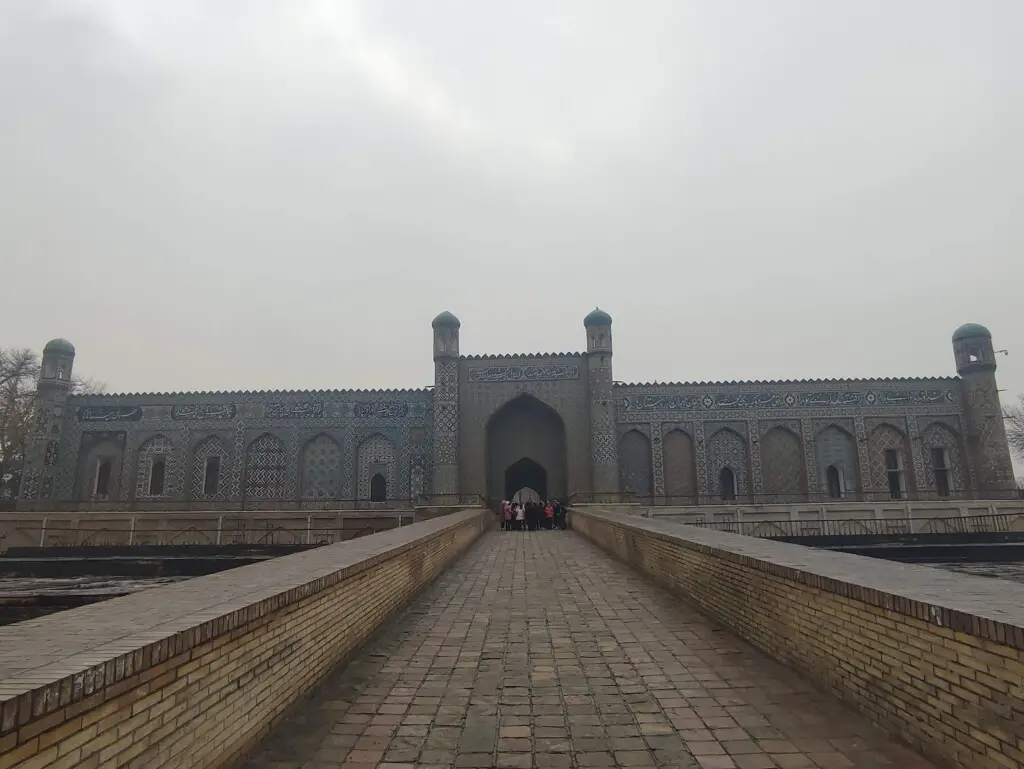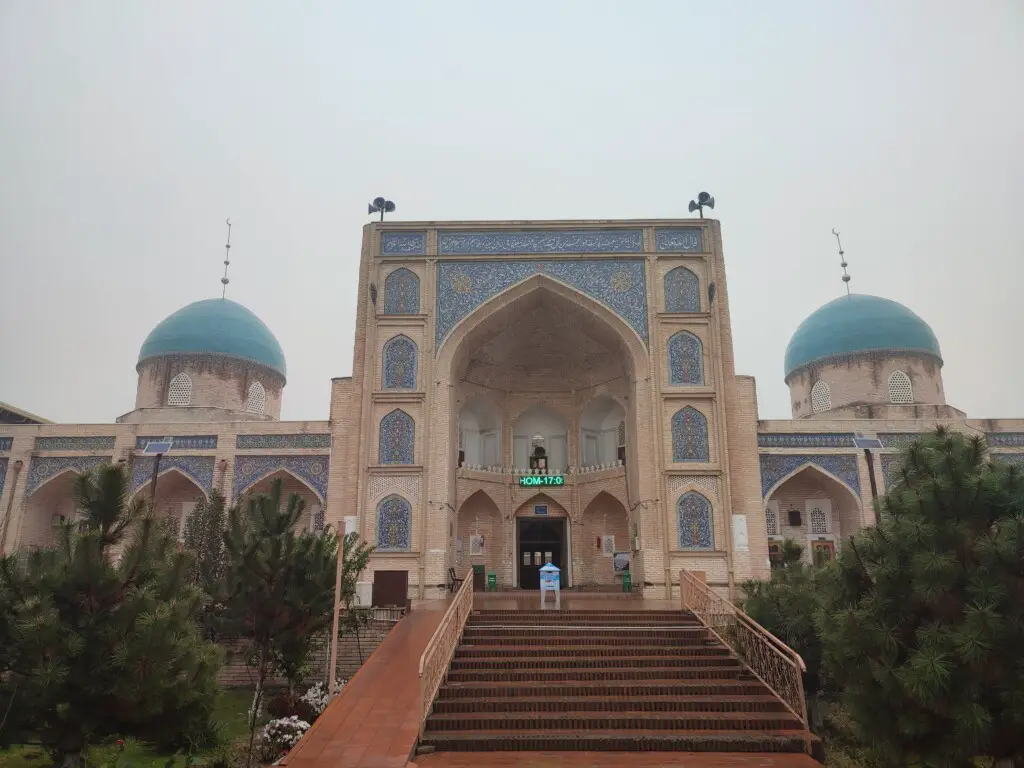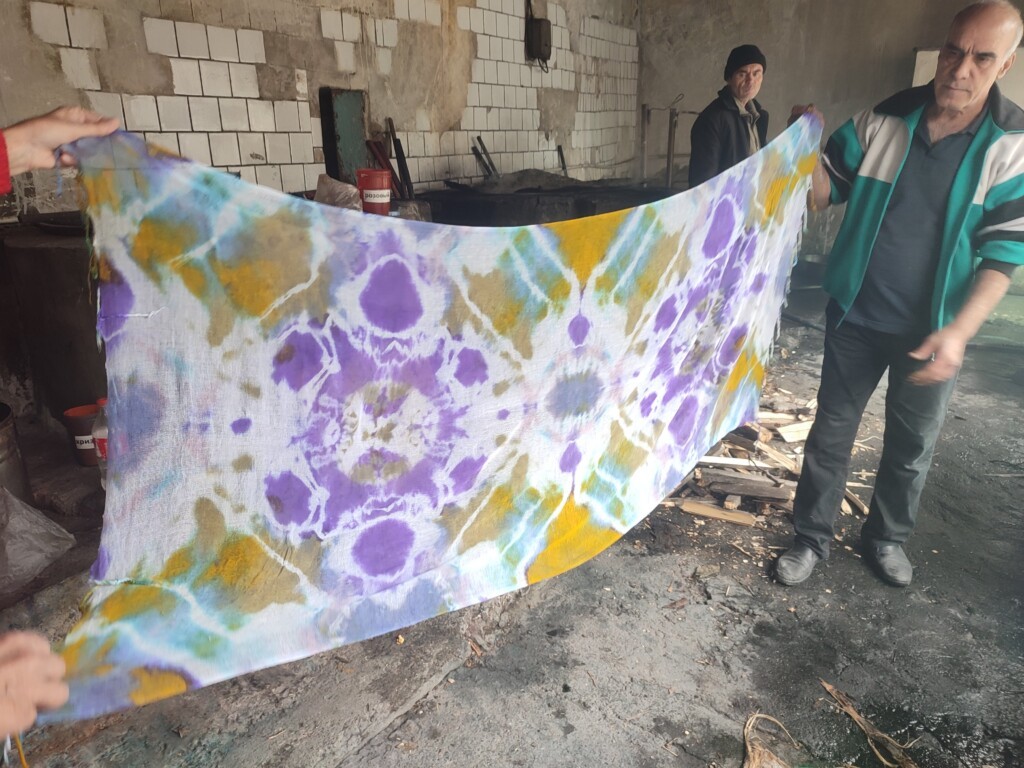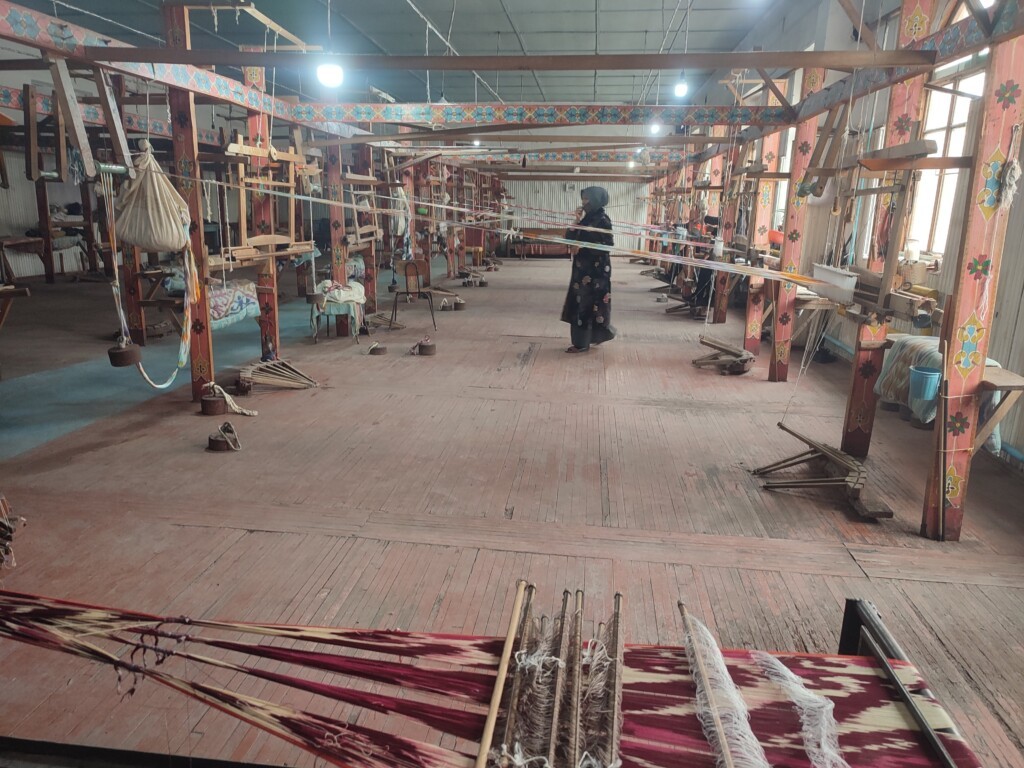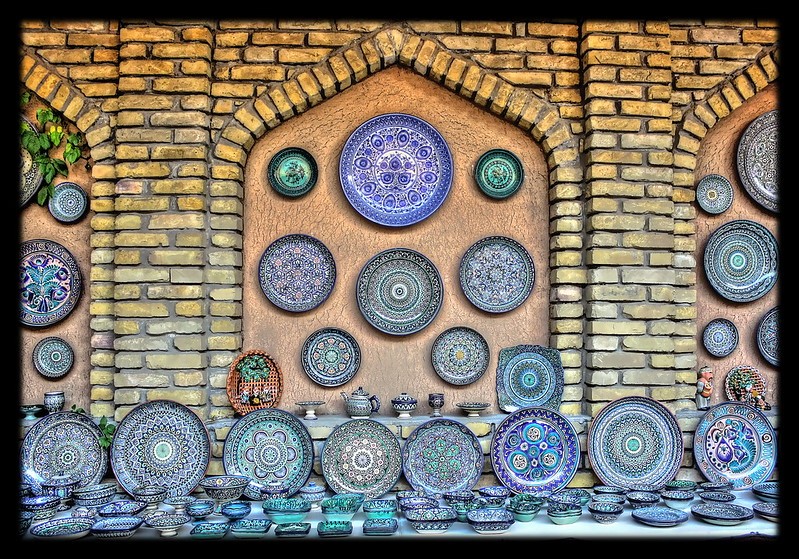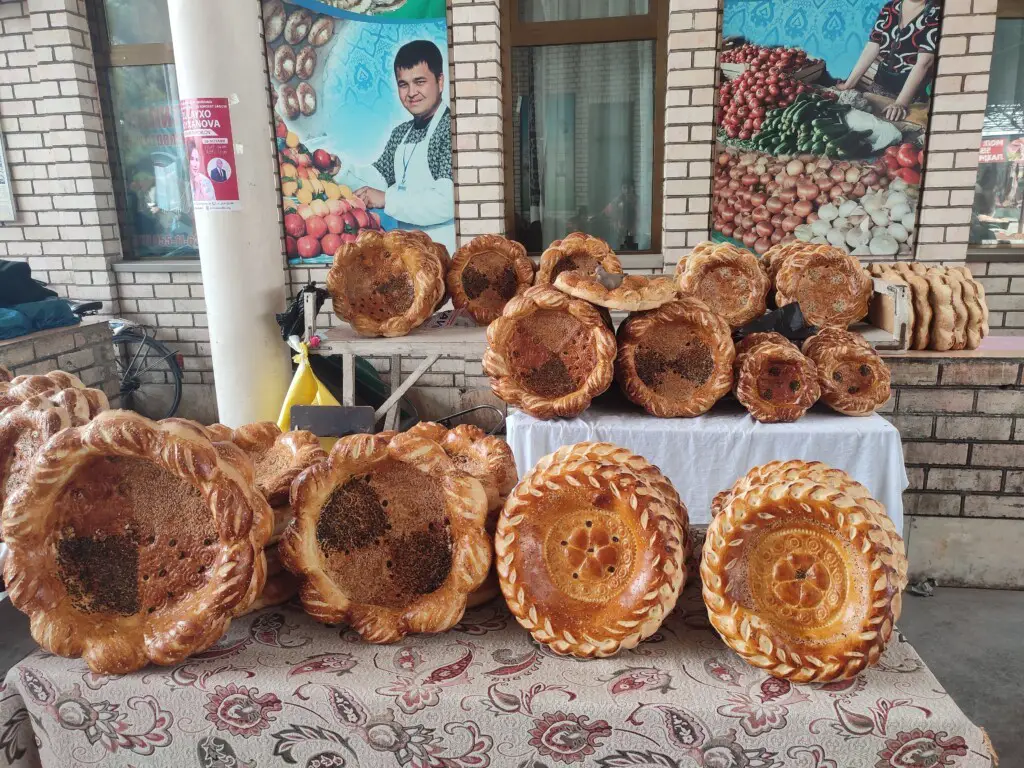The Fergana Valley of Uzbekistan: What to Visit and How!
This post may contain affiliate links. If you make a purchase using one of these links, I may receive a small reward at no extra cost to you. See my Disclosure Policy for more information.
If you want to visit a place that screams “SILK ROAD” louder than any other, look no further than the Fergana Valley in Uzbekistan!
While places like Samarkand, Bukhara, and Khiva remain in the spotlight, the Fergana Valley, this 22,000 sq. km. salient in the east part of Uzbekistan, is a markedly different region, culturally, geographically, and ethnically.
And it patiently waits to be explored!
Do you want a different Uzbekistan? One that’s more down to earth and more about the authentic countryside than majestic Islamic architecture? Then check out this Fergana Valley Guide!
Why visit the Fergana Valley?
With Uzbekistan opening up and mass tourism quickly taking hold, the magnificent cities of Samarkand, Bukhara, and Khiva are no longer a well-kept secret. What used to be off the beaten track 20 years ago is now surprisingly popular.
But the Fergana Valley remains off the radar.
Traveling in the Fergana Valley feels like you’re uncovering something concealed. It’s there, it’s been there for millennia, but it’s not common knowledge, it’s not mainstream yet. That’s the charm of it.
Cities like Kokand, Namangan, and Andijon will treat you with fabulous mosques and madrasahs, intricately engraved and decorated.
Cities like Margilon and Rishton will show you the source of livelihood for these people for the past 1000 years – silk and pottery.
All around the Fergana Valley, you will feel welcome by the friendly local Uzbeks, and your belly full with their hearty, flavorful meals.

Kokand – The City of Khans
Kokand was once its own Khanate. Back in the 18th and 19th centuries was almost as big and as important as its neighboring Emirate of Bukhara. This fact is largely overlooked by tourists who skip Kokand and the Fergana Valley in favor of the cities in West Uzbekistan.
Things changed for Kokand in 1876 when the Russian Empire annexed the region. Kokand was no longer grand, no longer powerful, and no longer even an independent entity.
Half a century later, the Soviets emphasized cotton production in Kokand. It became known (much like Manchester, UK in the 19th century) as Cottonopolis.
So what are some sites of these glorious times that remain in Kokand? Let’s see.
Palace of Khudayar Khan
The home of the last ruler of Kokand, this Pearl of Kokand is as marvelous, as the madrasahs in Bukhara. It was built in 1873, just 3 years before the Khan was toppled.
Its facade is intricately decorated and catches the eye like nothing else in the city. There are 114 rooms inside, although most are either empty now or closed to tourists (or probably both).
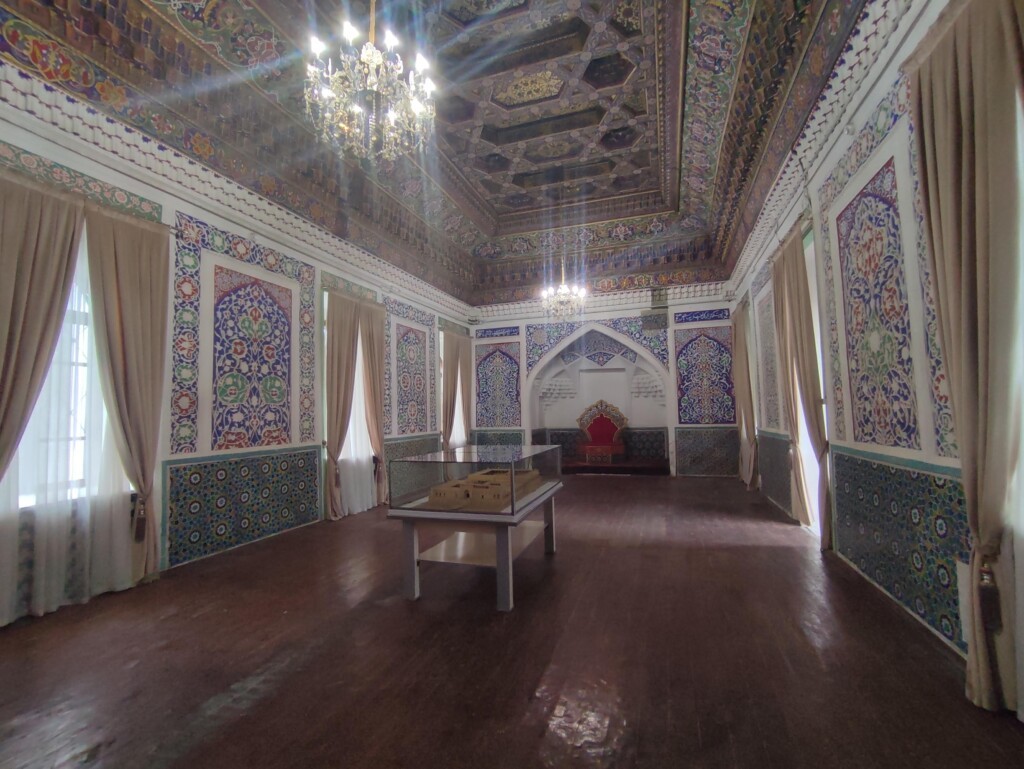
Entrance fee stands at 25000 UZS / 2 EUR and there’s a small museum inside.
Jome Mosque
I’ve seen all the spellings – Juma, Joma, Jami, Juma, Jameh. I’ll stick with Jome Mosque, as this is the spelling written on the plaque at the entrance.
Jome Mosque was built in 1812. To this day it’s the biggest mosque in Kokand. It houses the Museum of Applied Art and the entrance fee for both is 25000 UZS / 2 EUR.
Norbutabiy Mosque and Madrasah
Completed in 1799, this mosque is unique for a surprising reason. It’s one of the very few mosques that were open and operating during the Soviet regime.
The eight rooms in the main facade are for teachers of Arabic and the Quran. Only Muslim males may enter the inner courtyard. Women, Muslim and non-Muslim, can check out the Dasturkhanchi – the nearby girl’s madrasah.
Modari Khan Mausoleum
Right behind Narbutabey Mosque is a cemetery surrounding the impressive Modari Khan Mausoleum. It was completed in 1825 for the Khan’s mother. Its bright blue dome is visible from outside the complex too and is sure to remind you of the impressive Mausoleums in Bukhara.
Museum of the Great Scholars
Situated on the other side of the street from Norbutabiy Mosque (and a little further down) is the most impressive museum in Kokand.
Housing a massive collection of manuscripts, the Museum of the Great Scholars should not be missed.
You will get a precious insight into the history of Islam in this region of the world and leave enriched.
The entrance fee is 30000 UZS / 2.40 EUR.
Where to stay in Kokand?
I stayed in Rohat Hotel. Initially, I thought it was a hostel, but it turns out there are no hostels in Kokand.
This hotel surprised me pleasantly, so I am recommending it with both hands!
Namangan – The City of Wahabism

Namangan is an important city in the Fergana Valley for its manufacturing and salt production, but also for its intriguing history and conservatism.
If you’ve heard of Namangan before, it’s pretty likely about Islamic fundamentalism and the so-called Wahabi Islamic Movement of Uzbekistan.
But the city has moved on. The sect was outlawed and the “headquarters” of Wahabism – the Ota Valikhon Tur Mosque – was reopened as an art gallery.
Here are some notable sights in Namangan, listed by “awe” factor:
- Mullah Kyrgyz Madrasah: Built in 1910, then closed and used as a literature museum until it was restored by the locals again.
- Khodja Amin Mosque and Khojamni Kabri Mausoleum: Dating from 1720, it was only recently reopened and renovated. Only men can enter. The Mausoleum is unique with its mosaic style.
- Babur Park: That used to be the Russian Governor’s private garden. Right in the center of the city, can you imagine the audacity! Now it’s a public park named after the founder of the Mughal Empire – Emperor Babur (yup, his grand, grand, grandson Shah Jahan built the Taj Mahal in Agra), born in nearby Andijan.
- Ota Valikhon Tur Mosque: Used to be a hub for Wahabism. Now an art gallery.
- Chorsu Bazaar: It’s not so much that it doesn’t have an “awe” factor, but that there are many similar, bigger, and better bazaars around Uzbekistan. It’s a cool place, but not unique.
Where to stay in Namangan
The only hostel in Namangan is the Sardoba Hostel. It’s in a central location and the staff is helpful with transport information.
Margilan – The Silk City
Try to visit on Thursday or Sunday as the Kumtepa Bazaar is only open on those days!
It should’ve been called The Margilan Valley. Not only is it way older, but Fergana was initially called New Margilan! And it’s the center of silk production – the thing that defines the Silk Road and the area in the first place!
According to the legend, it was founded by none other than Alexander the Great, who was fed chicken (murgh) and bread (nan), thus sealing the city’s name. I think that’s pretty badass.
Long story short, don’t go to Fergana, go to Margilan. There you can simply see more interesting things.
Yodgorlik Silk Factory
This is the one place you must visit in the whole of the Fergana Valley. It’s open every day from 8 to 5 and the tour given is extremely informative (ticket: 30000 UZS / 2.40 EUR).
My trip there was amazing. The tour guide was a boy who spoke close to perfect English and walked me through all the steps in the silk production process: gathering the cocoons, soaking the silk, spinning, dying, and weaving.
You can also make your own silk piece and if it doesn’t look as planned (they never do with the ikan method), you can always buy one from the shop at the entrance.
Kumtepa Bazaar
It’s only open on Thursdays and Sundays and is the place where all the silk is sold and bought. Visit in the morning when most of the action and buzz are.
The Bazaar is about 5 km west of the center, so you’ll need to hop on a marshrutka or take a taxi (or walk, ya know, 5 km is not that far…).
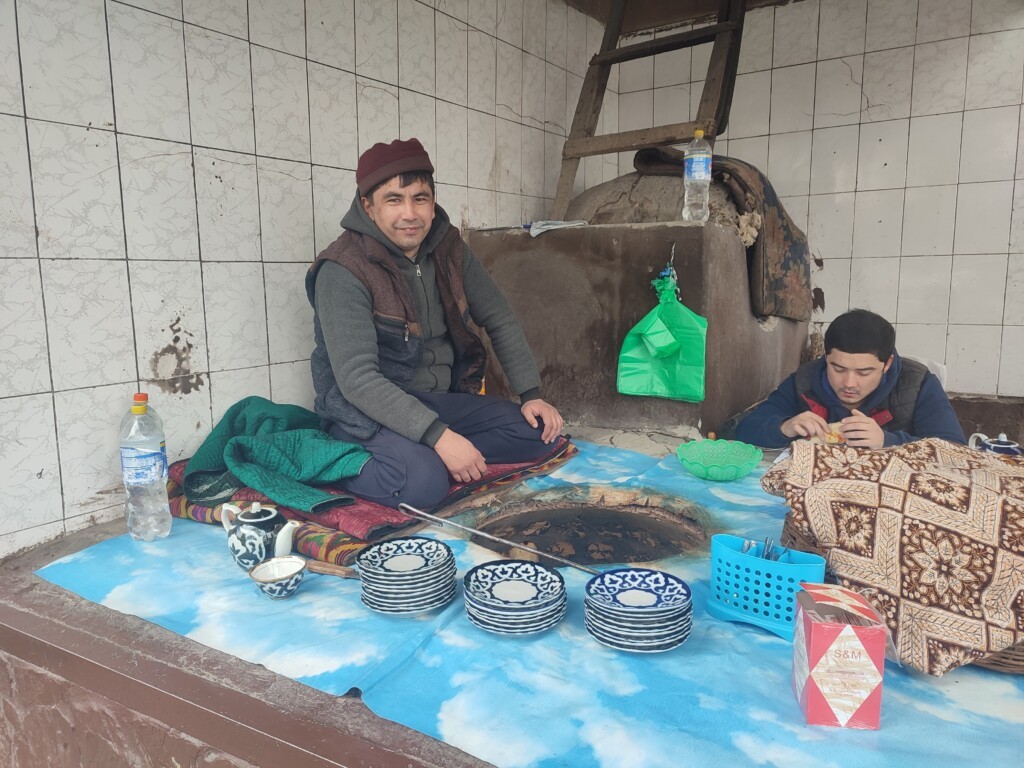
If you visit on other days or 5 km is too much, the bazaar in the center is a good substitute but orientated more towards fruits and nuts.
Khonakhan Mosque
Situated in the middle of Margilan, Khonakhan Mosque is a stunning example of Islamic art. Built in the 16th century, it has two minarets of 26 m. height.
They were wrapped in scaffolding in November 2022 when I went, so I roamed the streets looking for other beautiful mosques.
It wasn’t long before I found one. And then another. And then another. Yeah, there are a few in Margilan, just go around the smaller streets and you’re sure to find some.
Where to stay in Margilan
I can only recommend one place and it’s Ikathouse. It’s a beautifully decorated, renovated house with a garden that exemplifies the Fergana Valley spirit and vibe.
Nothing else comes remotely close to this guesthouse in Margilan (maybe even the whole Valley).
Do note that they close for the winter months (Nov – Mar) like many other seasonal guesthouses.
Andijan – The Rebel City
Andijan (sometimes spelled Andijon) was the first city I visited on my Uzbekistan trip. I came to Andijan from nearby Osh through the Dostuk Border and the difference was striking.
Whereas cities in Kyrgyzstan have no impressive or easily recognizable architecture, Andijan showed me what to expect in Uzbekistan: ornate Islamic architecture – mosques, madrasahs, and mausoleums at every corner.
Don’t expect the opulence of Samarkand though. It’s not at this level. I’m hyping it up, but in reality, I didn’t have a reference point.
Still, it’s one of the oldest cities in the Fergana Valley and the birthplace of Babur – the first Mughal Emperor. One of his great-great-great grandkids would build the Taj Mahal in Agra, India. This alone should be a reason to visit.
Joma Mosque and Madrasah
The Joma Mosque and Madrasah were pretty much the only buildings that survived the 1902 earthquake.
It’s the main mosque (joma/juma = Friday, which is the main prayer day) and its minarets are a whopping 32 m. tall and with the Mosque facing a busy street, it’s kind of hard to capture all of it in a single picture.
Navoi Square
Right in the middle of the city is Navoi Square. There isn’t anything outstanding about the way this square looks today, but this is where the infamous Andijan Massacre of 2005 took place.
This is where at least 200 (but probably more than 1000) were killed by the authorities to “prevent a color revolution”.
Jahan Bazaar
Just on the other side of the Square is the biggest market in Andijan and the region. Explore at your own pace and don’t forget to haggle – no price in Uzbekistan is final.
Where to stay in Andijan?
The best place to stay as a budget backpacker in Andijan is Hostel Eski Shahar. It’s cheap, it’s central and it’s cozy.
Rishtan – The City of Pottery
Rishtan, or Rishton, is halfway between Fergana and Kokand and is best visited as a day trip or a short stop when traveling between the two.
Rishtan is the center of pottery production in the Fergana Valley. Think of Uzbek pottery, what color comes to mind? Is it blue? Yeah, it’s blue! The bright blue glaze called “ishkor” on Uzbek pottery comes exclusively from the Rishtan area and mountains.
If you’re going to Rishtan, you are visiting one of two ceramics workshops.
Rustam Usmanov workshop
It operates as a workshop and as a museum and there are informative tours that will lead you through the whole process of ceramics production. If you’re lucky, you will see the master himself work.
Alisher Nazirov workshop
A smaller, lesser-known workshop by a ceramics master who’s one of the best in Uzbekistan. The master speaks English and will tour you around the place if he’s there.
Fergana – The New City
Fergana, unlike the other cities in the Fergana Valley, is a relatively new city. Only founded in 1876, after the Russian conquest of the Kokand Khanate, the city’s initial name was Noviy (New) Margilan, then it changed its name to Skobelev, its first governor.
The name finally settled at Fergana (the valley gave the city the name) after the defeat of the Islamic bandits known as the Basmachi Movement, who opposed Russian conscription for WW1.
The city is a great example of Russian influence with its wide boulevards and Tsarist-era buildings. It feels more modern than the rest of the Fergana Valley. This means there are more options to stay and eat, as well as transport, but fewer attractions that are worth visiting.
Fergana Regional Museum of Local Lore
If there’s one place that’s worth your time in Fergana, it’s the Regional Museum of Local Lore. It’s one of the oldest museums in all of Uzbekistan founded in 1895.
Today it houses an extensive collection of ceramics, stamps, jewelry, embroidery, paintings, literature, and archeological findings.
Unfortunately, there’s little written in English for the museum’s exhibits. Still, the entrance fee is only 15000 UZS / 1.20 EUR and you can see everything in an hour.
Where to stay in Fergana City?
The best place to stay in Fergana is hands down, no doubt, don’t even argue, Sakura Inn. The host Elsevar is knowledgeable and super friendly. The rooms are cozy and clean. If that’s not enough, there’s a cat on the property – Mr. Samson. You know how I am with cats…
How to Get to the Fergana Valley
From Osh, Kyrgyzstan
I got into the Fergana Valley from Osh, Kyrgyzstan, and entered through the Dostuk Border Crossing.
From the New Bus Station in Osh (the one a bit out of town, you can get there by trolleybus #2. On Google Maps it says “Avtovogzal“) you can take a direct bus (#777) to Andijan for 150 KGS / 1.6 EUR. This is the cheapest and most convenient option.
Alternatively, from the Aztovogzal you can take a marshrutka #107 or #113 to the border (10 KGS / 0.1 EUR), cross it on foot, then take a shared taxi to Andijan for 20000 UZS / 1.6 EUR. You’ll have to wait for it to fill though, and also haggle about the price. It’s a hassle. If you can, take the direct bus 777.
From Khujand, Tajikistan
From Khujand, you must take a marshrutka to the border town of Konibodum (10 TJ / 0.8 EUR), then change to another one for the border (3 TJS / 0.25 EUR), then cross on foot, take an Uzbek marshrutka to Beshariq (5000 UZS / 0.4 EUR) and you’ll probably want to take another one to Kokand (10000 UZS / 0.8 EUR).
From Kokand, you can go anywhere in Uzbekistan by train, bus, or shared taxi.
From Tashkent
There is a daily train from Tashkent to Andijan calling at Kokand and Margilan. You can check the train timetable here.
Going by shared taxi is also possible, but the train is just so comfortable and cheap that I don’t think it’s worth it.
Alternatively, if you have money to spare, book this Fergana Valley Tour and they will take care of everything.
Flying in
Fergana has an international airport with the IATA code FEG with regular flights from Istanbul and Moscow.
Is Fergana Safe?
The short answer is yes.
Maybe you’ve heard of the Andijan Massacre from 2005. Uzbekistan was way different then. Now Islam Karimov is gone, the country is opening up to the world and economic growth is picking up. The Uzbek Fergana Valley is much quieter and much safer.
What’s giving Fergana Valley its bad reputation nowadays is the parts of it that are divided between Kyrgyzstan and Tajikistan. A third of their border is disputed and there are regular clashes displacing thousands of people, most recently in the fall of 2022 around Batken.
However, this turbulence happens outside of Uzbek borders. The Uzbek part of the Fergana Valley remains stable and without causes for concern.



